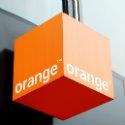French giant is addressing its power consumption, and improving its customer experience, as its annual power bill trajectory takes it towards $1 billion by 2020, says executive.
September 24, 2014

CANNES, France -- ECOC 2014 -- Orange is putting power consumption management at the heart of its corporate strategy to prevent its annual power bill reaching the US$1 billion mark by 2020, a threshold it could reach if the issue is not addressed properly, said a senior executive from the telco here in Nice.
Speaking to a packed auditorium here at ECOC, Mari-Noelle Jégo-Laveissière, executive vice president of innovation, marketing and technologies at Orange (NYSE: FTE), noted that the operator's energy bill was heading to the shocking $1 billion mark within six years as it presses ahead with its fiber access broadband and 4G rollouts in multiple markets. (Orange is operational in 30 countries and has more than 236 million customers.)
As a result, addressing power consumption, alongside efforts to provide a personalized customer experience, is going to be key component of the company's strategy as it seeks to make money from the increasing demand for broadband-based services and applications.
So what is the power challenge facing Orange? Well, it's often said that companies want to reduce their power consumption to reduce operations costs and help protect the environment (the former is the major reason, but the latter gives us the chance to refer to the French telco as a green Orange). Jégo-Laveissière, though, went a step further than just saying it's an issue by providing some insights into the statistics driving the operator's power management challenges.
On the plus side, electronics efficiencies are getting better by a factor of two every 18 months. However, Orange's energy costs are rising by between 2% and 6% per year and traffic volumes are growing at anything between 30% and 50% per year, depending on the market.
So what Orange needs is to build higher-speed access networks that consume less power. Part of this can be achieved by deploying fiber access networks to replace copper, as fiber-based GPON access lines can deliver fixed broadband speeds of up to 200 Mbit/s using half the energy required to deliver DSL-based broadband services over a copper access line.
But that only scratches the surface. The real challenge is finding a way to reduce the power consumption of the optical network terminals (ONTs) that sit at the premises of fiber broadband customers: They account for 90% of power consumption.
Jégo-Laveissière said there are some techniques to start addressing this, such as implementing "sleep mode" when the ONT is not being used.
Want to know more about optical networking developments? Check out our dedicated optical content channel here on Light Reading.
In the near-term, though, there are greater power reductions advances to be made in the metro and core network: Here, Orange is exploring the elastic optical network concept (whereby transmission parameters such as the data rate, modulation format and wavelength spacing are tunable rather than fixed), the potential of dynamic resource allocation, and the use of tools to increase spectral efficiency. Such moves would not only cut power consumption but also increase network capacity, noted the Orange executive.
In its efforts to identify the full range of energy-saving efforts, Orange is collaborating with a number of specialist organizations, such as SASER, FOX-C and Trend (Towards Real Energy-efficient Network Design).
It's also pushing aggressively to deploy fiber access broadband to all homes and businesses in Palaiseau, in the southern suburbs of Paris, in an effort to figure out exactly how much power consumption rates are affected by a switch to all-fiber access networks.
— Ray Le Maistre, 

 , Editor-in-Chief, Light Reading
, Editor-in-Chief, Light Reading
Read more about:
EuropeYou May Also Like









